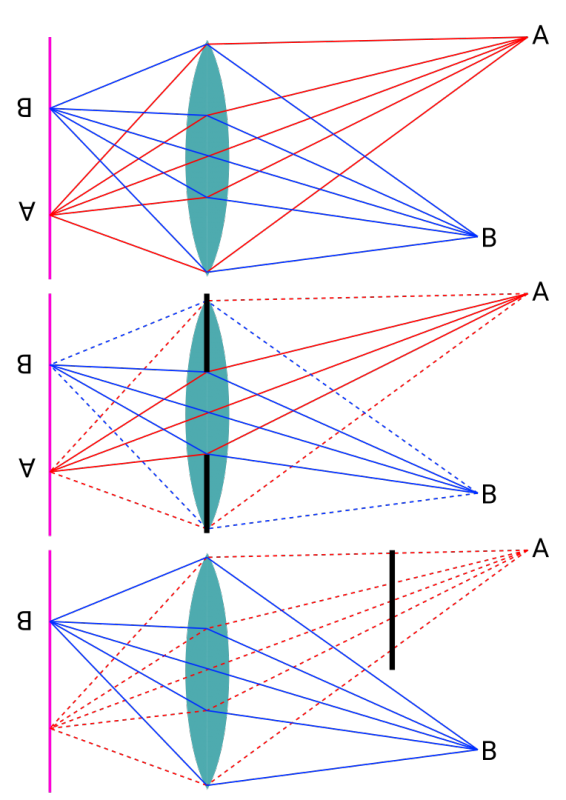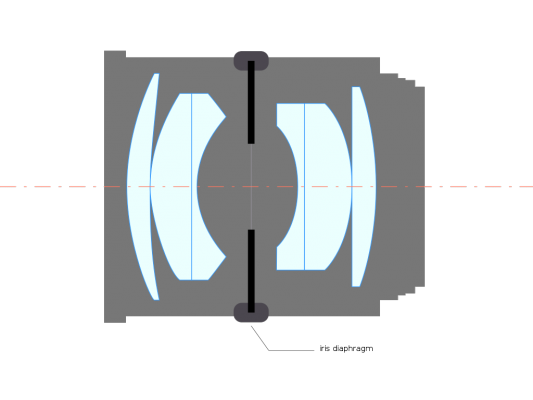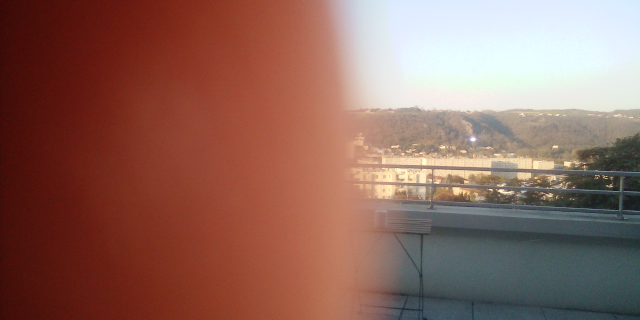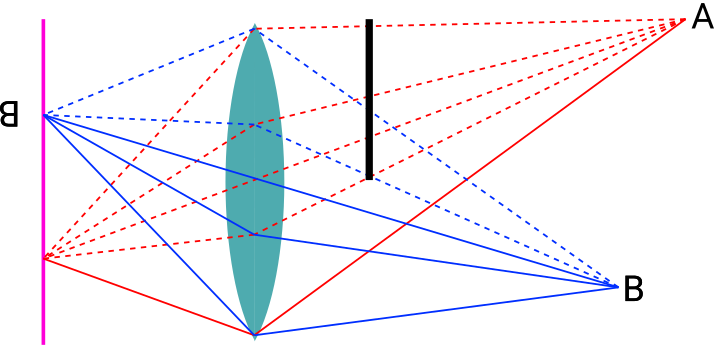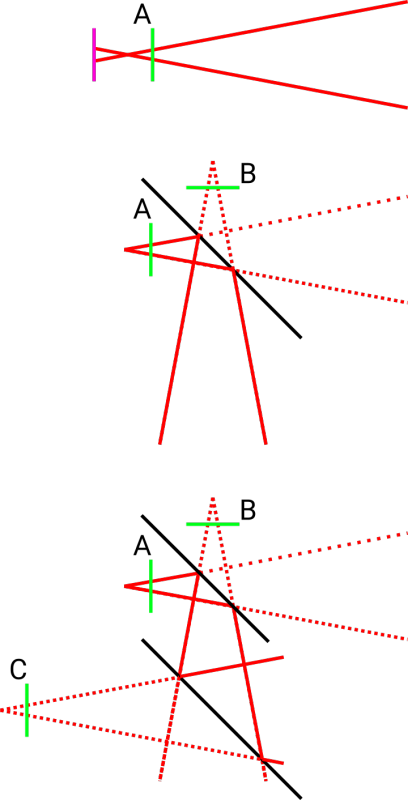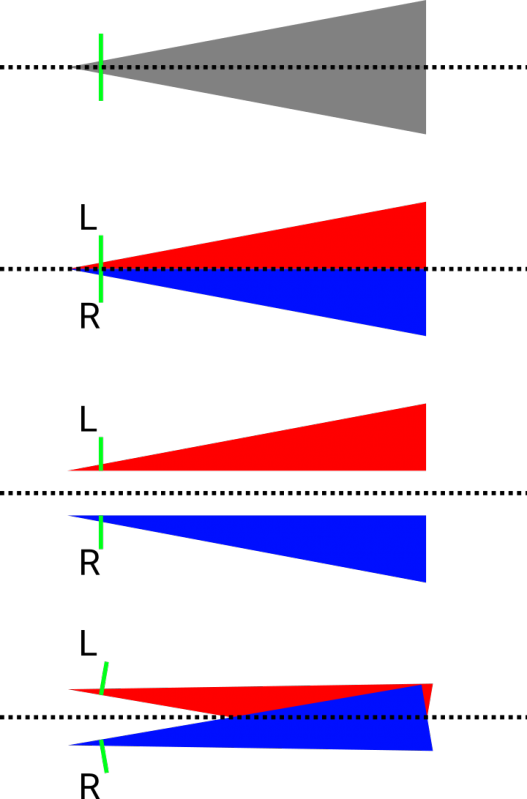Mono-lens stereo beam splitter
Aperture vs field diaphragm/mask
- TOP: all the light rays coming from one point though the lens, supposed point A, is sent to a single point of the picture (when focused).
- MIDDLE: if you have a diaphragm/mask very very close to the lens (ideally inside the lens system, see the second picture), you are reducing the light rays comming from each point of the scene, keeping the whole scene with less light. You have an aperture diaphragm/mask.
- BOTTOM: if your diaphragm/mask is far from the lens (according to its size), you hide all the light of a part of the scene (suppose you are hiding all the light from point A), keeping the light of the other part of the scene (suppose point B). You have a field diaphragm/mask.
To be able to do stereo shots, you need your mirrors to act like 2 complementary field masks, thus they need to be not-too-close to the lens.
Diaphragm included in a lens system:
On this example, the finger is nearly acting as a field mask, but being already too close to the lens, it is also partially acting as an aperture mask, creating an intermediate blurring in the middle: far central points are sending a part of their light rays through the lens, they are not all completely hidden.
Mirror system, one side
- TOP: without mirror, the pink line is your sensor, the red triangle is the shot field, the green line A is your shot (what you see when holding the final picture in front of your eyes).
- MIDDLE: with one mirror, your shot is in fact mirrored as if it would be the virtual green line B
- BOTTOM: with two mirrors, your shot becomes the virtual green line C
Beam splitter
- FIRST: without mirror the green line is your shot (what you see when holding the final picture in front of your eyes), the gray triangle is the shot field.
- SECOND: the first set of 2 mirrors is splitting the picture in 2 complementary parts, acting as complementary field masks. Each half of your shot shows a half of the field.
- THIRD: the second set of 2 mirrors is providing with the stereo-base. If the set of 4 mirrors is exactly configured to be +90° and -90° angles, you get 2 halves of the scene with no overlapping.
- FOURTH: to get the stereo with 2 views overlapping the same part of the scene, you need to toe-in somewhere in the montage, for example by rotating the second set of mirrors. You get keystone effects.
